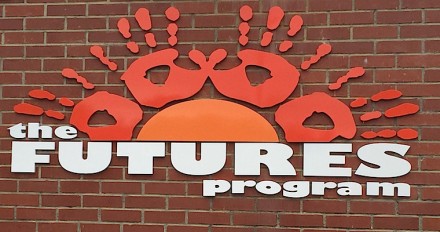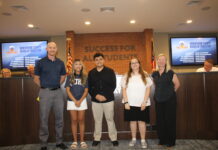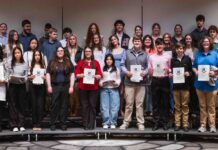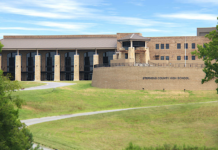
Habersham County’s FUTURES Program not only serves local students; it serves a specialty student population from Banks, Hall, Hart, Lumpkin, Rabun, Stephens, and White Counties.
Habersham Superintendent Matthew Cooper explained Thursday that the former “Cornelia Elementary #2” and “Regional Colored High School” building on Elrod Street now is the home of the FUTURES Program, a regional school for “students that have special needs.” Those students, he said, “have such severe emotional and behavioral disorders that we are not able to serve them in our regular schools.”
Habersham’s Board of Education toured the site on Thursday, which is now home to a full-time counselor and a psychologist in addition to its teachers and administrator. There is one section of the school for severely autistic students; a Sensory Room, where the lights can be dimmed and occupational therapy and other services are performed; an Intervention Room where students can have supervised “time-out” relaxation; and classrooms where teachers help their students to succeed academically.
Cooper stressed that when the building was given to Pioneer RESA, the Habersham schools benefitted financially. Other school systems paid for renovation of the building, he said, and not having to transport students to a special program in Hall County has saved the school system “over $60,000 in transportation,” he said. The employees of the FUTURES Program are not Habersham employees; they work for Pioneer RESA, the agency that built the up-to-date playground, and provides school supplies.
“We send our kids here at no cost,” he said, “and we don’t pay for services.”
FUTURES Program director, Dr. Patty Adkins, said that she has “an awesome staff,” and that “academics are number one,” in the operation of the program. She stressed that the school is “not an alternative school; it is a therapeutic program.”
Habersham school board chairman Dr. Robert Barron remarked that a “Home/Living/Kitchen” learning area in the school is designed to help students “in the areas of science, technology, engineering and math.”
Noting that the building “design is an old-fashioned school,” Barron also asked Adkins if the school would consider hosting a tour for those who attended there, when it was the Regional Colored High School. There are people who “are interested in preserving the building’s history,” he said.







